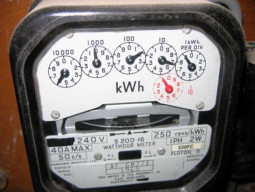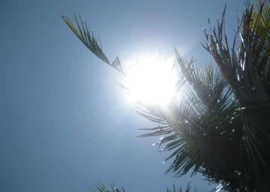
Where the arrival of the cool monsoon season was usually seen as a blessing for the heat battered populace, the recent pouring of the highest recorded levels of rain has brought with it aggrieving repercussions, with citywide outages and inundated avenues.
Despite the Provincial Disaster Management Authority (PDMA) issuing instructions to all the concerned departments, including the Water and Sanitation Agency (WASA) before the start of the pre-monsoon rain season, to prepare for urban flooding in low-lying areas like Kasur, Okara, Dera Ismail Khan, and Lahore, the inefficacy of the concerned teams to rigorously clean out sewage drainage systems beforehand has allowed rainwater to accumulate across major residential and commercial centres of the provincial capital including the recently upgraded Kalma Chowk underpass.
“The drain outside my house is clogged with dung and mud. The cleaners superficially washed the area, photographed it and left. If only they had properly cleaned the drains, rainwater would not be standing outside my house today,” complained Arshad Khan, a resident of the Gulberg area.
According to Noreen Fatima, a researcher working on town planning and urban development at a private university in Lahore, heavy rains inundate cities more frequently than rural areas because much of the urban landscape is covered by pavement, which prevents water from absorbing into the earth.
“Therefore, in order to prevent urban flooding the drainage systems must be well-developed and properly cleaned so that the drains and gutters can regulate the flow of water and prevent it from accumulating,” said Fatima, who further advised the concerned agencies to invest heavily in groundwater recharging projects, which would allow rainwater to absorb into the ground and collect in an aquifer.
A similar initiative had been taken up by the Punjab government for collecting rainwater underground and using it for watering plants and grass in parks.
The Parks and Horticulture Authority (PHA) and WASA had joined hands to build the first underground tank to collect rainwater in the Bagh-e-Jinnah which had a capacity to store 1.4 million gallons of water, while four other tanks were to be built in different areas of the city. Unfortunately, the project was abandoned midway, and the four tanks could not be constructed.
Where some might wonder how the current scenario might be different had the aquifers been built, WASA officials on the other hand believe that citizens’ irresponsible attitude towards public infrastructure has exacerbated the drainage issues facing the city.
“Since the drains are usually uncovered, people regularly throw garbage in them. Lahore has 5,300 kilometres of sewage lines and seven large drains. How can we ensure the cleanliness of such a large network of drains, when people do not refrain from polluting them in the first place,” questioned an official from WASA.
Speaking to The Express Tribune on the matter, Gufran Ahmed, head of WASA, said, ”it is only normal that unusually heavy rains trigger waterlogging in many areas.
However, all low-lying areas were cleared within a few hours of the rain stopping. While WASA is functioning to the best of its capacity, I still believe there is always room for improvement.”
Published in The Express Tribune, July 10th, 2023.





1726222798-0/Tribune-Pic-(13)1726222798-0-165x106.webp)
1732012115-0/Untitled-design-(14)1732012115-0-270x192.webp)
















COMMENTS
Comments are moderated and generally will be posted if they are on-topic and not abusive.
For more information, please see our Comments FAQ